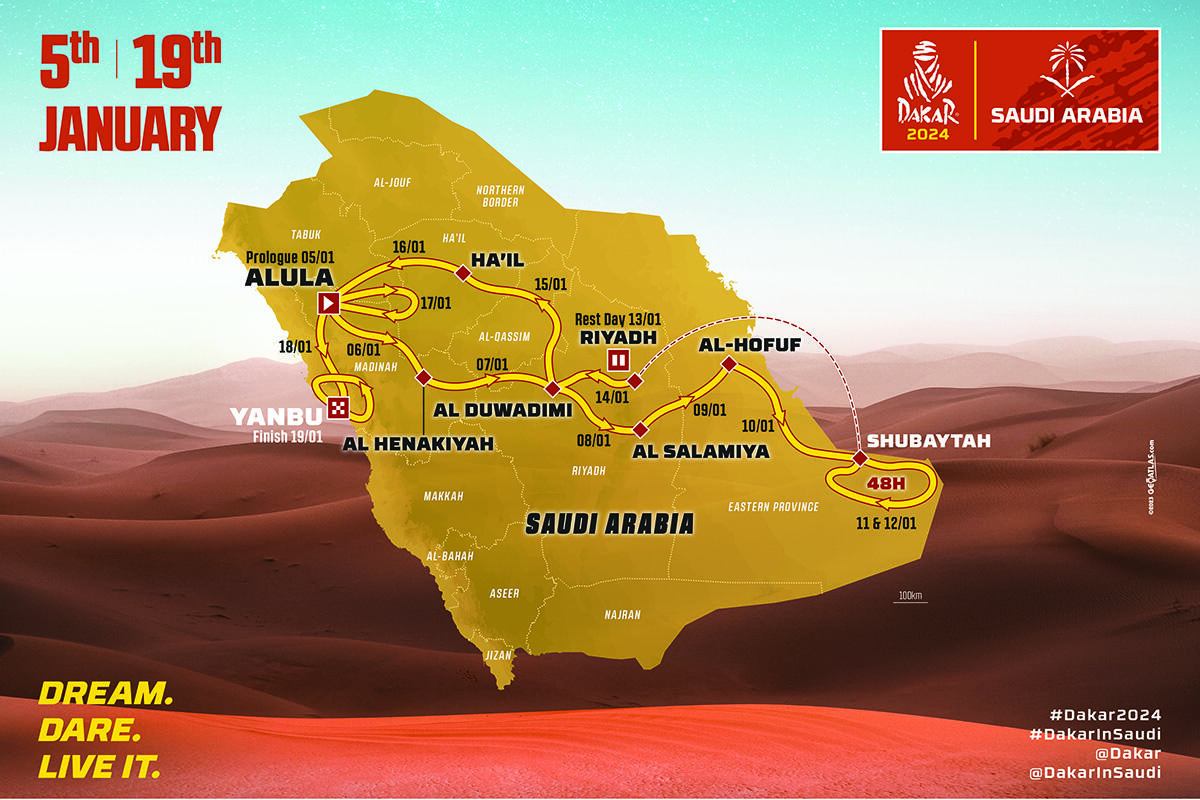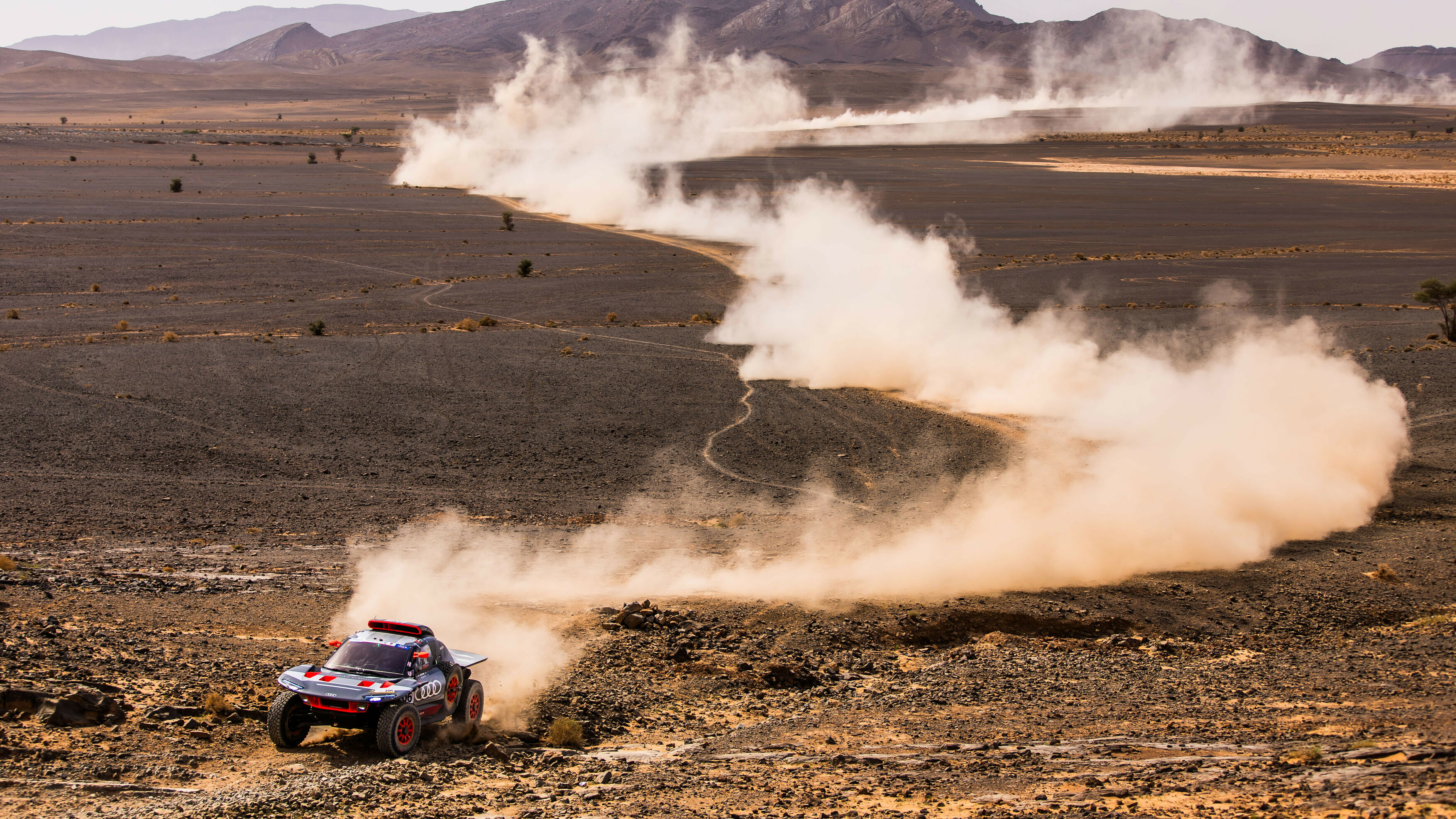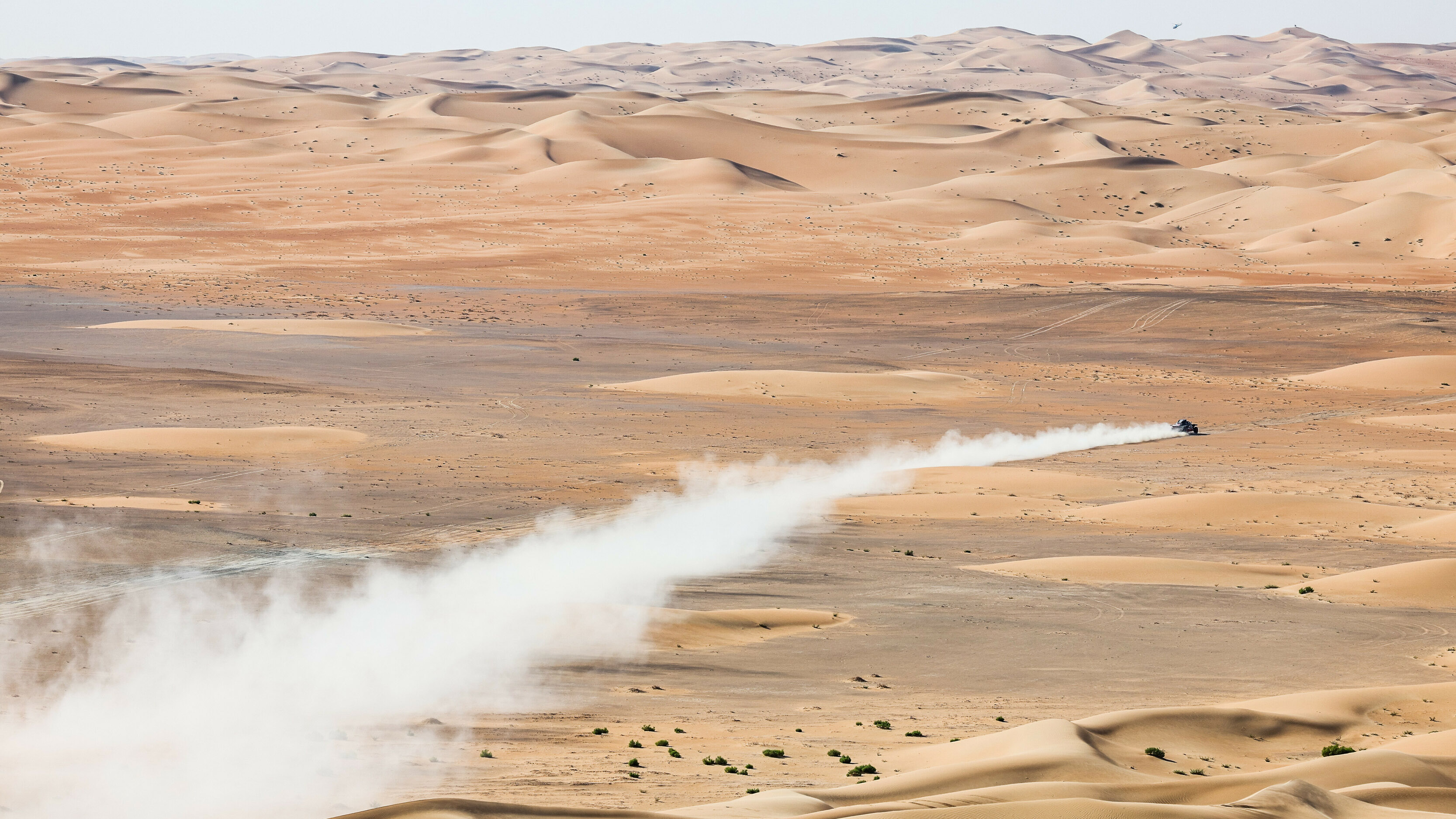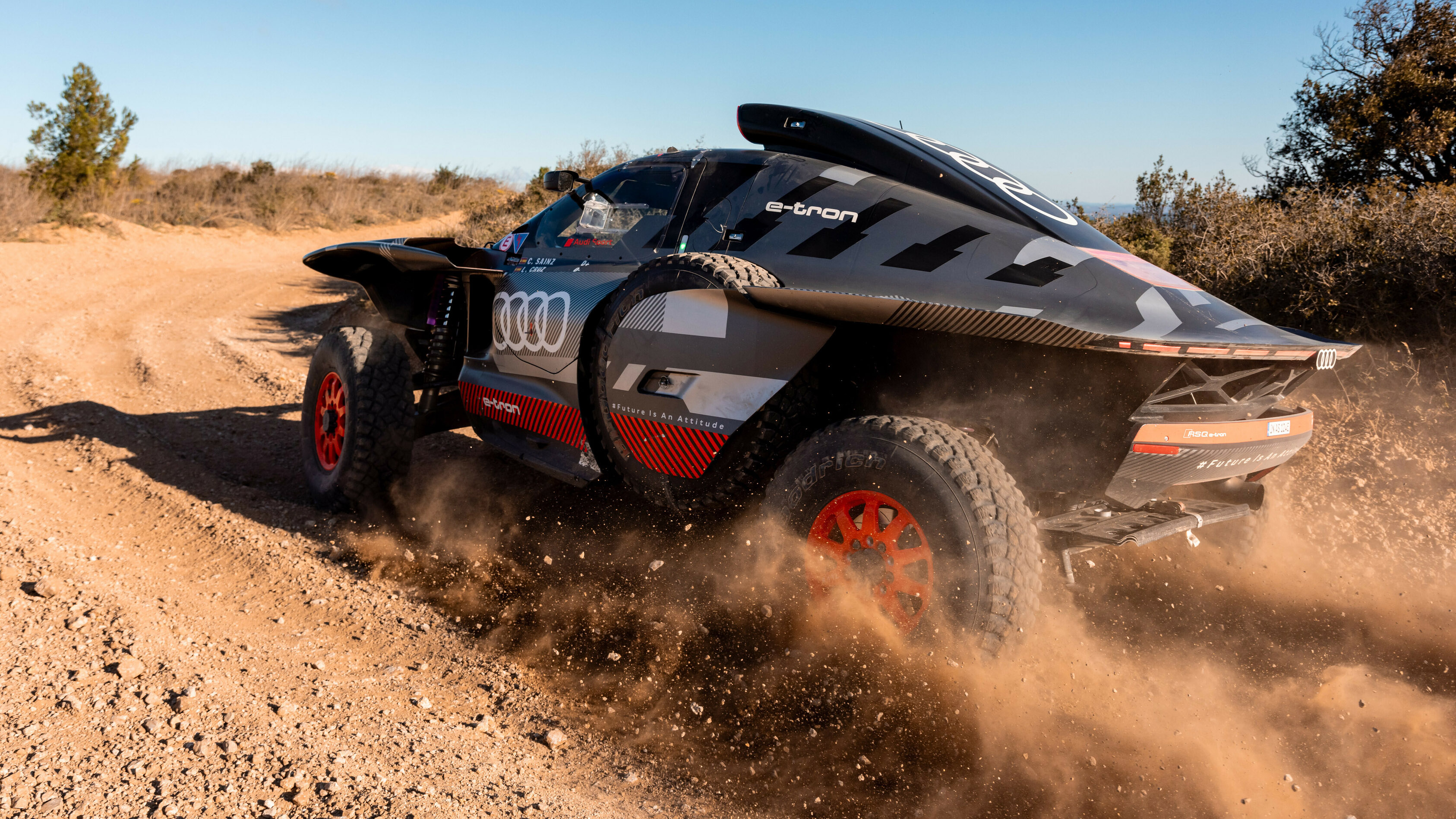
The 2024 Dakar route takes in a marathon new obstacle
Not content with sending its competitors flying across 5000 miles of desert, this year sees a 48-hour ‘marathon stage’ test their limits further
Setting scary new challenges at the dawn of each new year isn’t uncommon in the human psyche. But burning a few calories at the gym or reducing your screentime has nothing on this – January’s 46th running of the Dakar Rally promises to be among the toughest yet. That’s one heck of a lofty bar to hurdle.
The competitors will have traversed almost 8,000km (5,000 miles) of desert by race end, with even trickier hurdles to overcome than usual. This year, the race’s fifth visit to Saudi Arabia will bring new challenges. The world’s toughest race has just got tougher.
Most pertinently the halfway point of Dakar 2024’s twelve stages is an unprecedented 48-hour ‘marathon stage’, which promises to be exactly as punishing on both competitors and their machinery as its noble title suggests. And trust us, arid desert is no place to cheer up a gruelling marathon with whimsical fancy dress costumes, either.
Bikes, cars, trucks and ATVs will head between Saudi’s west and east coasts before looping back again, starting in AlUla on January 5 and returning to Yanbu on January 19. Athletes and their support crews will all come together in AlUla at a super-sized bivouac (aka bivvy) to finalise their meticulous preparations before Dakar 2024 kicks off for real.

This year’s launch bivvy moves inland into desert surrounded by majestic Nabataean temples. Little chance of sending a postcard home, though. As from the very start everyone will have a portion of their brain saved on 2024’s gruelling midpoint. There are no refreshing half-time energy drinks or slices of orange in this sport, as athletes approach the Arabian Desert’s desolate Empty Quarter for a stage like no other. Measuring 1,000 kilometres (620 miles) long and 500 kilometres (310 miles) wide, this hyper-arid stretch of sand is populated only by local tribes and visited by the most hardy of souls.
The 48-hour marathon format means competitors have until 4pm to get as far as they can along the 766km (476 mile) stage before pulling into one of eight bivvies dotted along the route. Bikes and cars will compete different courses, too, ensuring the top four-wheeled teams don’t gain the bonus of tracks left in the sand by two-wheelers. Navigational nous must come to the fore.
Once the clock strikes four and they’ve parked up at the next available bivvy, teams’ access to provisions and camping materials will be minimal – no chance of lovely catered meals in this secluded corner of the world – with their machinery tucked away until morning when competition reignites at 7am. The race back to the stage’s Shubaytah start point has a tantalising rest day in Riyadh dangled at its finish point. Albeit with half of the rally still to go…
The competitors will point back northwest towards the Red Sea and a return to AlUla for Dakar 2024’s final stages before finishing in Yanbu. It’s a city with over two millennia of history thanks to being a crucial stage on the ancient Incense Route, which saw the transport of frankincense and myrrh from the Arabian Peninsula to the Mediterranean. Perfect for identifying the rally’s wisest men and women as the clocks stop and chequered flag falls, then.
For more Audi performance stories, head this way
*This vehicle shown here is the Rally Dakar vehicle that is not available as a production model. Closed course, professional driver. Do not attempt. The Audi RS Q e-tron combines an electric drivetrain with an energy converter system comprising a TFSI engine and generator.
Featured

More from Top Gear
Trending this week
- Car Review
BMW iX3







